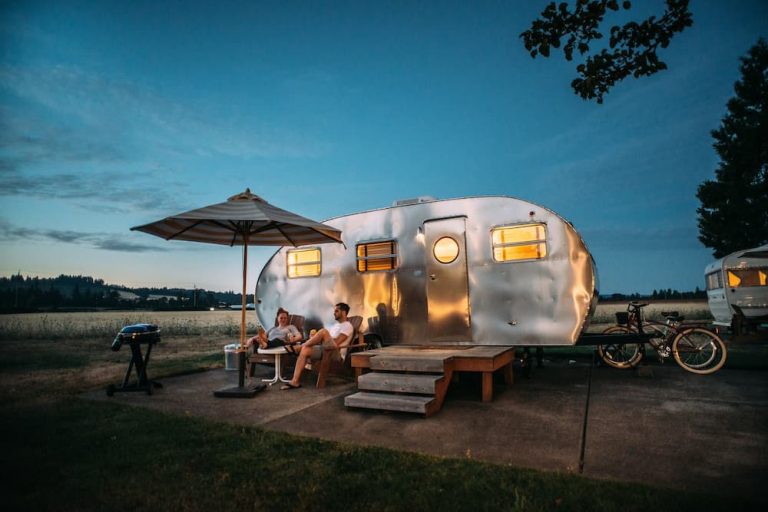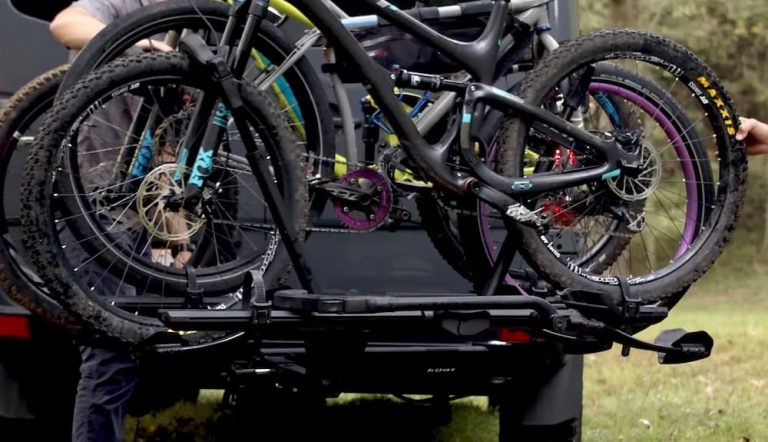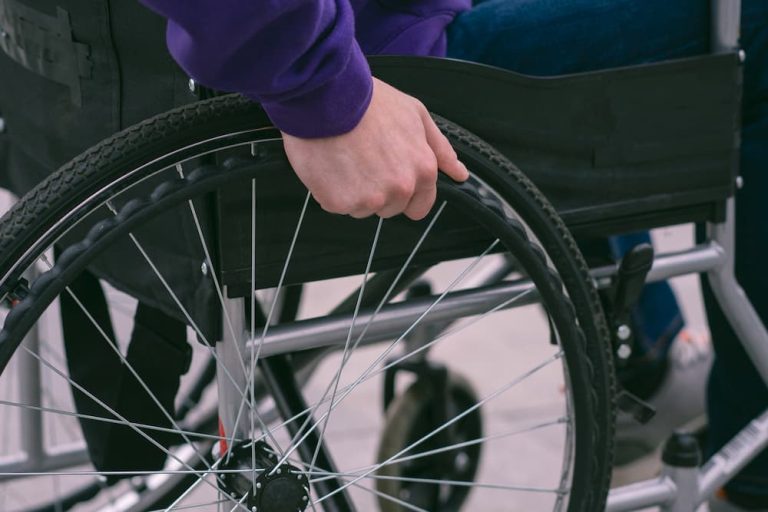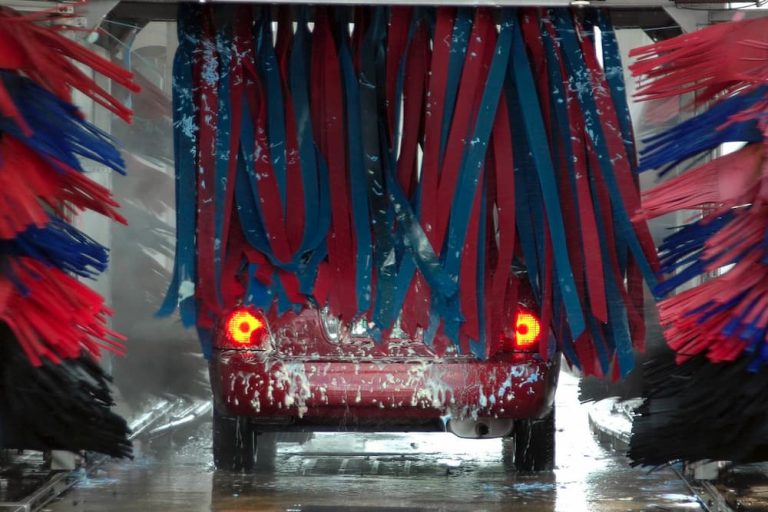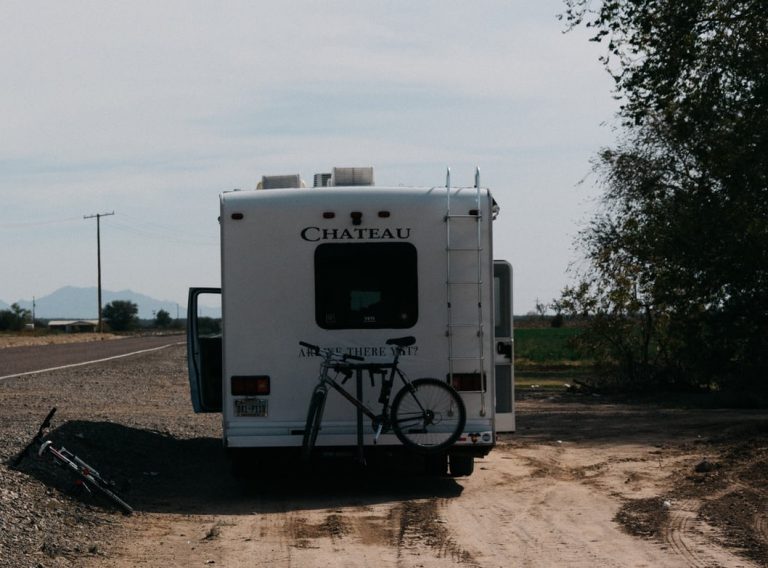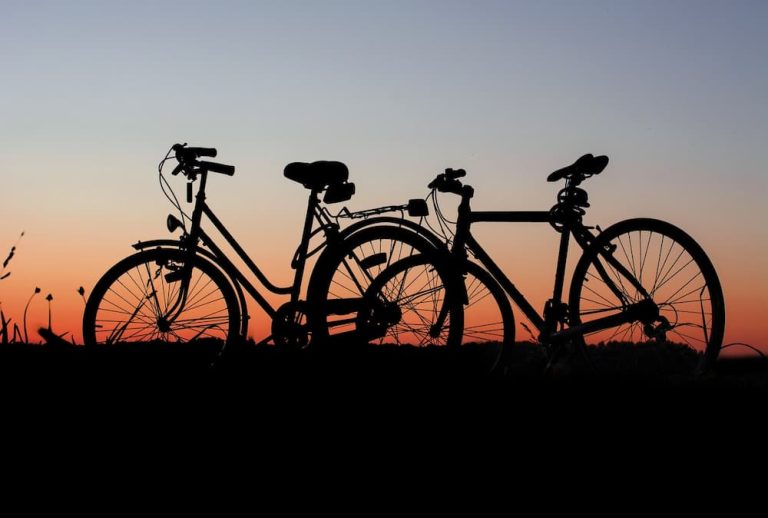How To Carry Bike In Car
A car is an ideal way to carry bikes, especially long distances. However, due to the restricted space in automobiles, you cannot simply dump your gear inside. It is critical to protect the safety of your bike as well as your vehicle.
If you do not take precautions, you may end up harming both. Using a car to haul your bike around will require caution, and you’ll undoubtedly have to be strategic in approaching the situation.
Consider a few things when carrying a bicycle in a car. The back of the vehicle must have enough to accommodate the bike in the first place.
You can also try out a few more techniques that don’t require putting your bike inside the car. Read on to find out.
Contents
How To Carry a Bike in a Car?
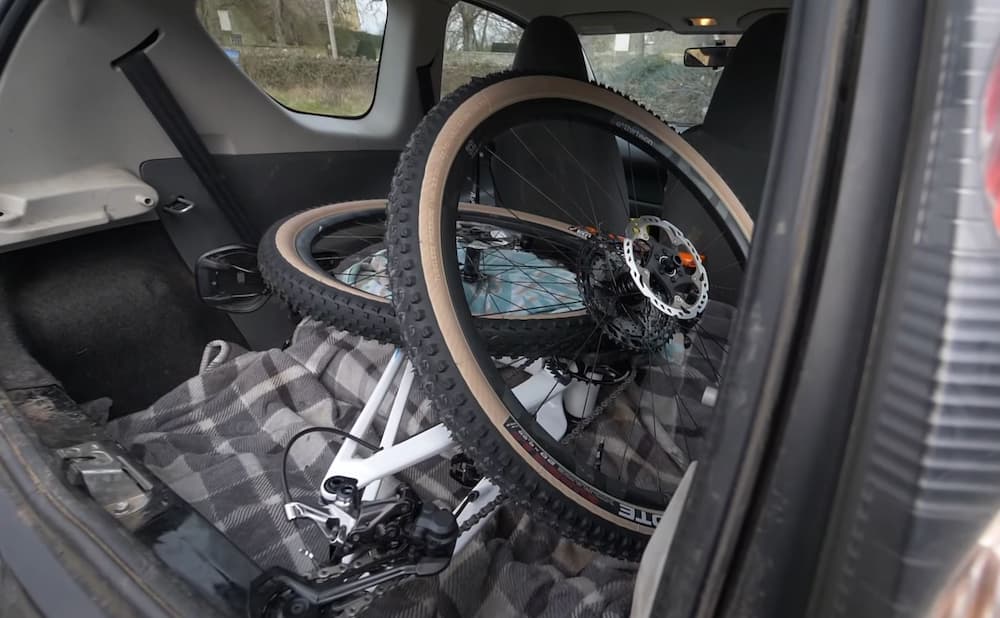
A car is so versatile that you don’t have to stick to one method to carry your bike in your vehicle. Some will call for disassembling the bicycle, while some techniques require extra equipment.
Related reading: How to Carry A Tandem Bike On A Car?
In the Trunk
If you have the time and willpower to assemble and disassemble your bicycle, you can put it in your car’s trunk.
This method is also one of the safest ways to transport your bike during long trips. Your bike will stay safer thanks to the cloth and foam surrounding them within the box.
Some vehicles have enough trunk space to fit a bike without taking the wheel off. However, you will need to disassemble the bike for smaller sedans, essentially taking off the wheels. It will make the bike more compact, and you’ll be able to place it inside the trunk easier.
If your vehicle has back seats that can be pushed down, do that. It will ease fitting the bicycle into the back seat through the trunk. Longer bikes are easier to handle this way.
Place the bike inside the trunk so that the gears face up. Cogs and gears are dirty and can get dirt all over your car. Just make sure the gears are never facing down. We recommend laying down a sheet or blanket over the vehicle’s trunk.
Pros
- Doesn’t make the interiors of your car a mess
- The bike isn’t visible to the naked eye, which prevents theft
- No necessity to buy additional accessories
- Allows you to carry all lengths and types of bikes
Cons
- You must disassemble the bike
- The trunk may get dirty unless you take precautions
Related reading: How to Transport Bike in SUV?
In the Rear Seat
Lay down some old towels or an old blanket on the back and boot of the seats. Given how much grime or mud a bike picks up, you’ll be glad you did this later. Plus, take one of the wheels off to fit the bike better. It’d be best if you could remove both wheels.
Most new bikes come with quick-release levers, which make removing the wheels super easy, particularly the front wheels. Make sure you move down to the last possible gear to exert the least tension on the chain. It will make taking off the rear wheel significantly easier.
Brake plugs can fasten the brake calipers. For bikes that come with disc brakes, ensure you attach a few disc brake plugs. Even if the levers get scrunched up during travel, the brake calipers’ alignment will stay the same.
Worst case scenario, you’ll not be able to ride your bike as the brakes will be jammed. To fix that, you will either have to re-bleed the brakes or pry on the calipers.
When stashing the bike’s frame into the rear seat, ensure the dry side is up. By that, we mean the side of the bicycle where the chain, derailleurs, and brakes are found. These components are sensitive and should not experience unnecessary pressure.
Once you’ve packed the frame properly into the rear seat, you can just place the wheels where they can fit. The wheels can cushion parts of the frame that might move around.
Your goal is to fit everything snugly together while minimizing the chance for movement. Roads by riding trails may get bumpy; the last thing you want is unwanted scruff marks on the bike or car.
It might be best to wrap an old rag or a bunch of newspaper around your pedals. The studs that grip your shoes when riding the bikes will scratch your car’s interior.
Pros
- Easy to take the tires off
- Leaves the trunk open for carrying other stuff
- It doesn’t require you to purchase any additional accessories or items
Cons
- Not convenient when you’re traveling in a group
- It might leave your interior dirty despite the preventive measures
In the Trunk with Rear Seat Folded Down
Another method involving the rear seat requires the owner to fold down the rear seats. To start, clean your bike. Remove any debris on the frames, handlebars, and tires too.
Now, fold the rear seats of your car to make space for your bike. How much space this will free up depends significantly on your vehicle, but you should generally get sufficient space for laying your bike down.
Suppose there’s enough space to lay your bike flat, do that. Make sure to put a blanket on the surface to protect the car’s interior.
If there isn’t sufficient space for laying the bike flat, turn the front wheel to the sides so that it faces up when the bike is lying in the car. It will free up some floor space and help you fit the bike even in a smaller vehicle.
Because your bicycle will shift a lot when the car is driving, you must secure it in the car, especially when the front wheel is facing upwards. Use a bungee cord to hold the bike firm.
Pros
- You don’t have to disassemble the bike
- There’s no additional expense
- One of the easiest methods as it doesn’t require much preparation
- Keeps the bike safe as it isn’t exposed
Cons
- It might leave your car’s interior dirty
- The bike may get damaged unless it’s secured properly
- You won’t be able to take extra passengers as the rear seats will be folded
On the Bike Rack
In this approach, you purchase a bike rack built for a vehicle’s trunk and attach it roof or trunk of the car.
It’s as simple as tying it to the car’s part. However, bikes are easier to steal when they are on bike racks because the thief only has to cut the straps with a knife.
Some bike racks come with locking mechanisms; you should opt for these to keep your bike safe. If your bike rack has no built-in locking mechanism, you must opt for aftermarket accessories such as U-lock or cable lock.
Based on the bike mounting, sensors and backup cameras are often entirely operable. That’s worth double-checking. When placing your bicycle on the back, examine the sides. How far does your bike protrude?
A hatchback is easier to operate with a trunk mount, given you’re okay with the tailgate weighing more because of the one or two bikes you have attached to it. A trunk-mount rack can easily be moved between vehicles with a little loosening and fastening straps.
Remember that any vehicle with racks installed might experience wear on its body – paint stripping on the edges where the bike pads sit.
Many people forget to consider the possible dual purchase situation with roof-mounted car racks.
Also, the bicycle will still be outside the car, so the risk that applies to any bicycle on a bike rack also applies to this one. Plus, bike racks cost a great deal of money, and not everyone may be willing to spend that sum.
Pros
- It lets you carry your bike anywhere without having to compromise interior space
- Keeps the interior clean
- It doesn’t require you to disassemble the bike
Cons
- It affects your car’s aerodynamics and increases gas consumption
- It makes noise if the bike isn’t secured firmly
- It opens opportunities up for thieves eyeing your bike
- Depending on the rack, you may need some time to get used to the mounting process
- Your bike is exposed to environmental factors
Read more: Best Bike Rack For Car Reviews & Buying Guide
In a Trailer
Bicycle trailers are the most expensive option, but they’re very convenient for those who need to carry multiple bikes frequently. Despite their high price point, trailers are preferred by many cyclists because of their convenience.
Firstly, you don’t have to disassemble your bike as trailers offer enough space to carry them in one piece. Also, depending on the trailer, you can take anywhere from three to five cycles.
For this method to work, get yourself a trailer first. You can find various kinds of trailers online and offline on the marketplaces. You need to purchase one that offers you an appropriate number of slots.
For example, some trailers might allow you to carry up to six or five bikes, but you may not need that. You can go for smaller counts to save money and get a lighter trailer, which will save gas consumption later.
Most trailers don’t offer built-in locking systems. However, they come with bars and poles that allow you to position your bike correctly and lock it firmly in place. So, it would be best if you also got appropriate locks.
Pros
- Leaves the interior unaffected and free
- It doesn’t require you to disassemble your bike
- It lets you transport up to five cycles or even more
- Great for carrying your bike across long distances
- Perfect for racers as it doesn’t tamper with your bike’s balance
Cons
- You need to get used to the trailer
- Expensive as you must get the bike as well as security measures
- Increases gas consumption
- Leaves your bike exposed to the weather
Related reading: Mazda CX5 Bike Rack Reviews & Buying Guide
Conclusion
Now that you know how to carry a bike in a car, it’s up to you to choose the method that will work best for your vehicle and bicycle. Taking your bike in the trunk is excellent if you’re moving and not planning on cycling right upon arrival.
If you’re traveling to ride your cycle at some particular place but don’t want to spend much, you can try carrying it in the rear seat or fold the rear seats altogether.
Those who need to carry their cycles frequently can go for a bike rack. These are versatile and will save up a lot of interior space. If you’re a professional bike racer or planning on carrying multiple bikes, go for a trailer!
It won’t be the cheapest option, but it’s the most convenient one for taking a ton of bikes in one piece.

